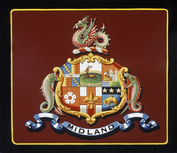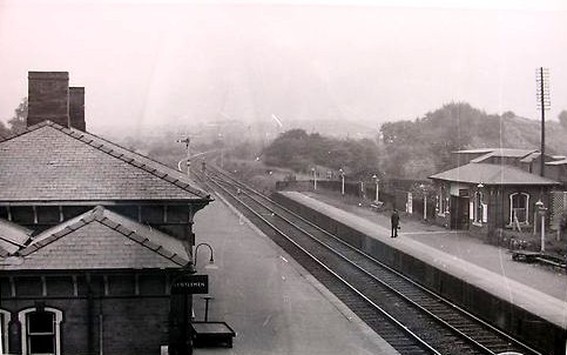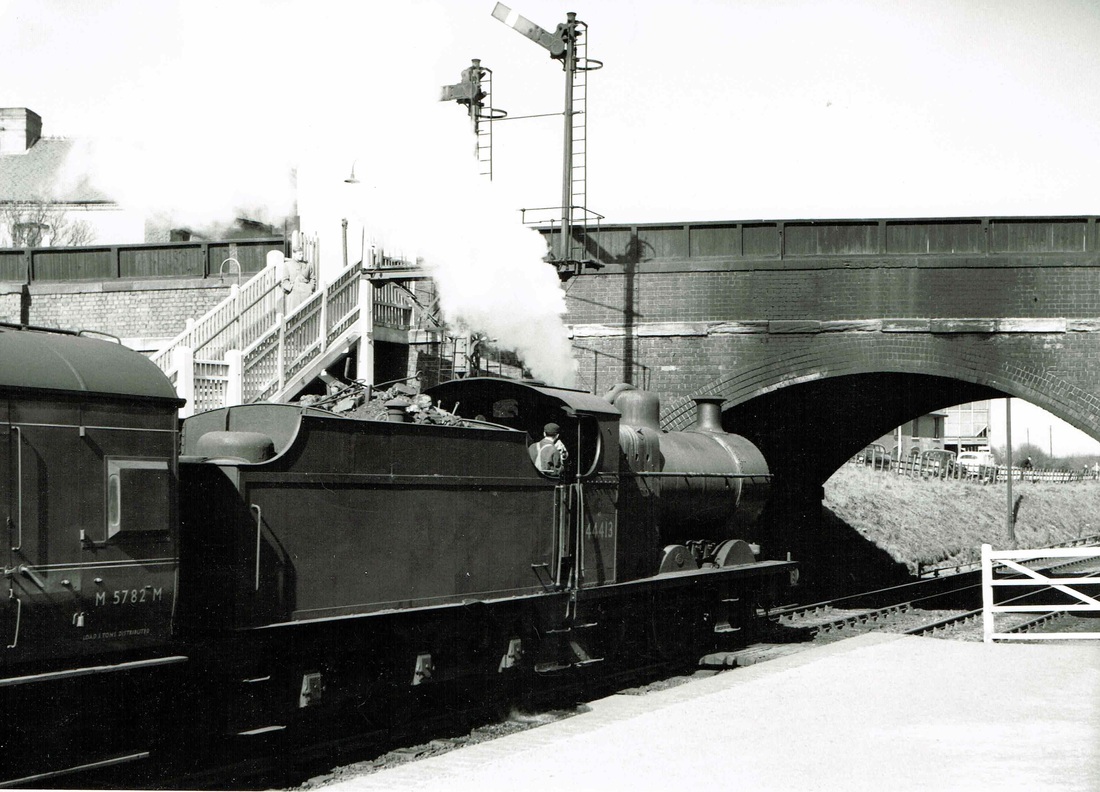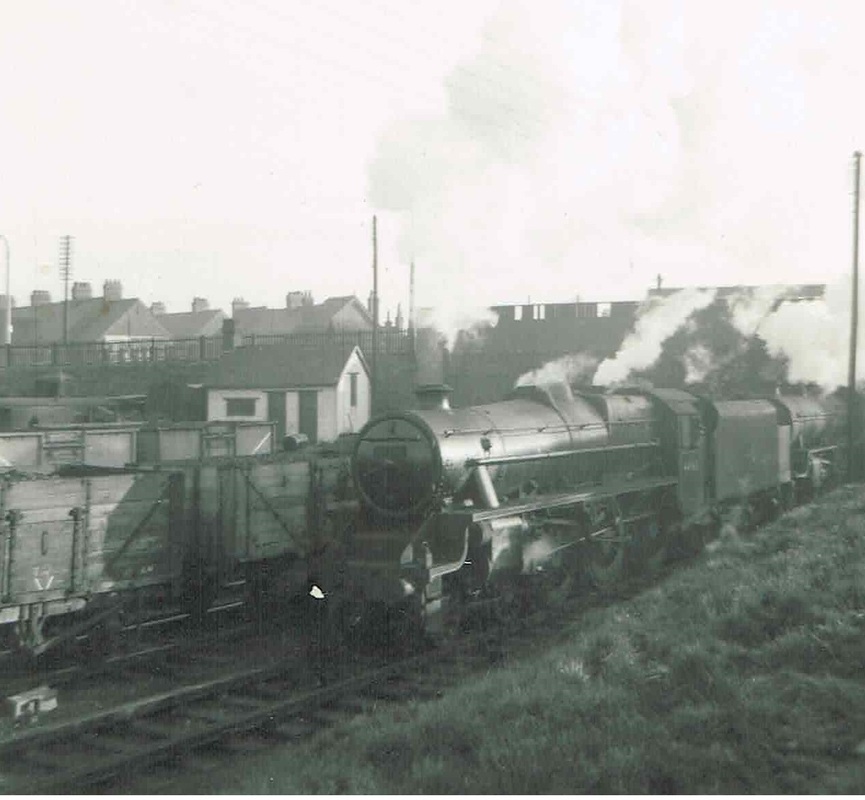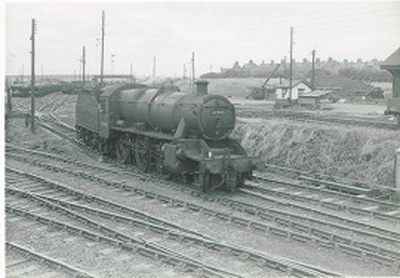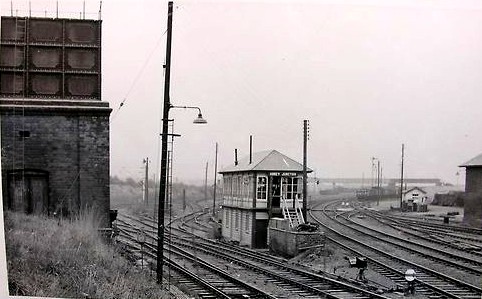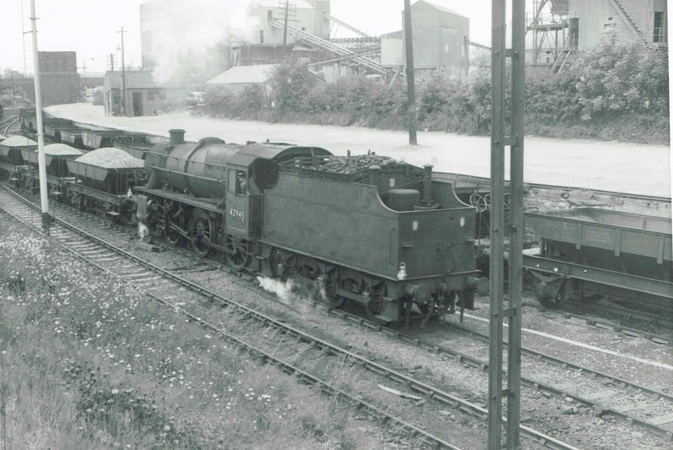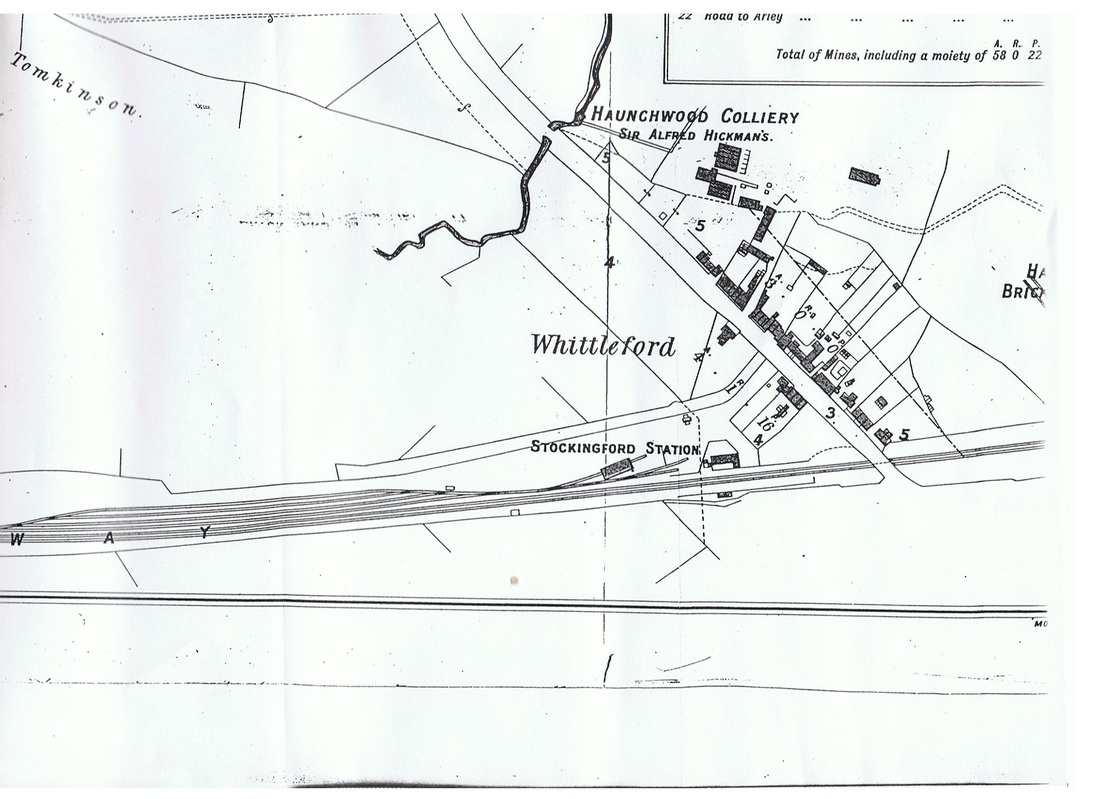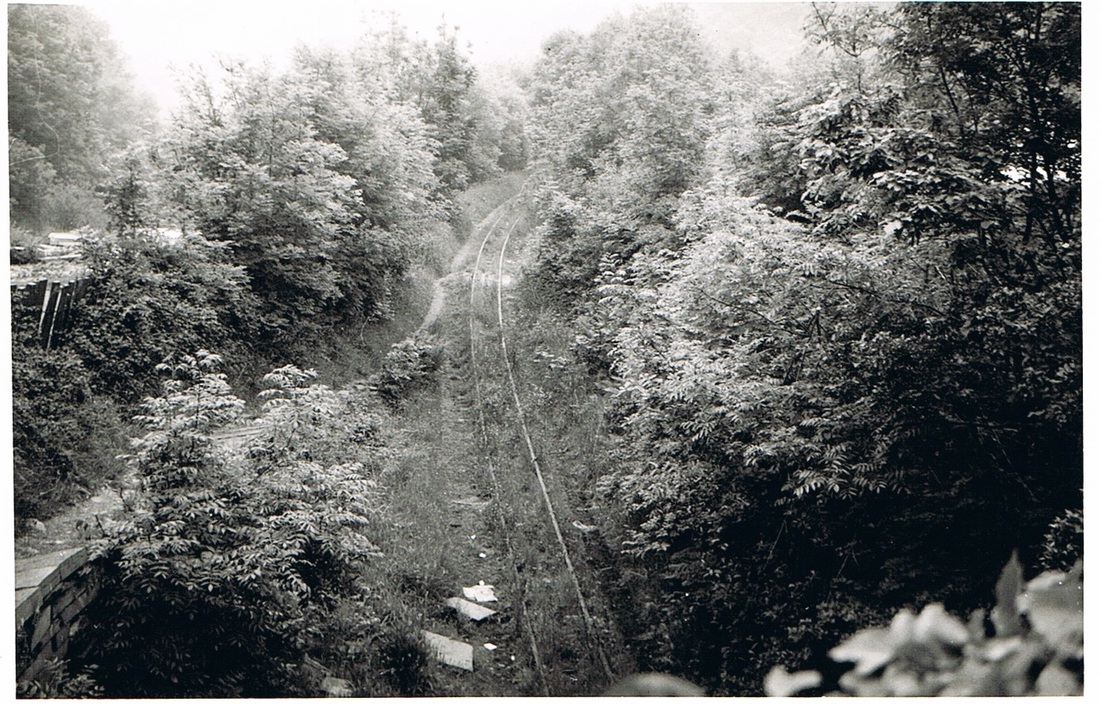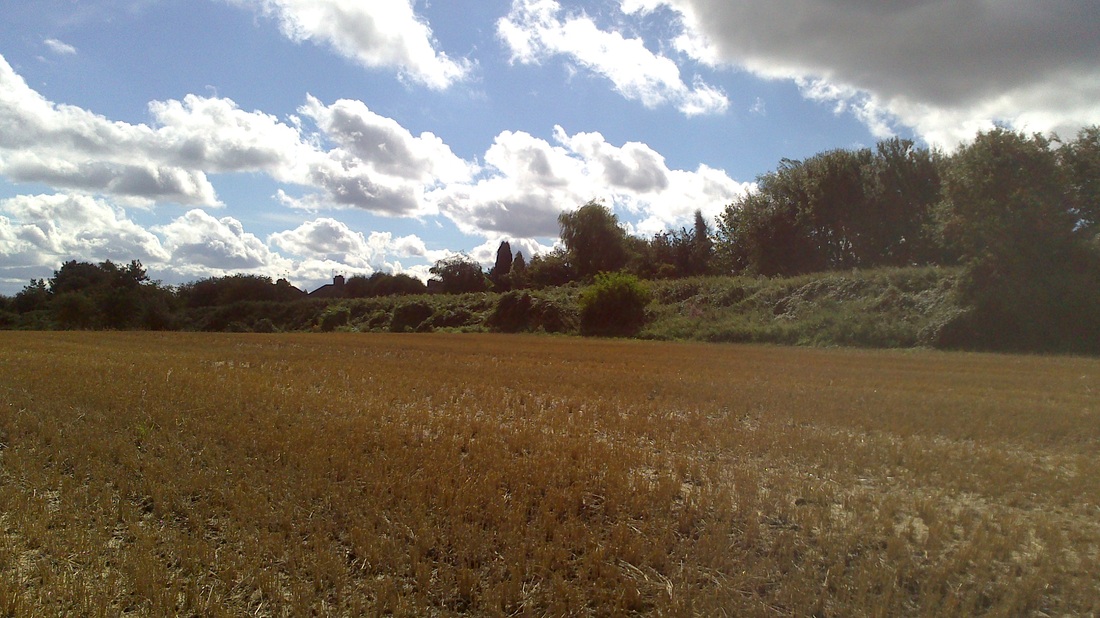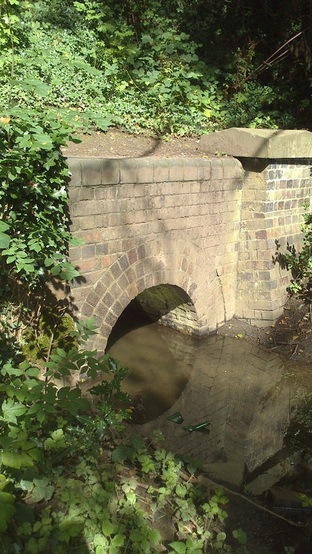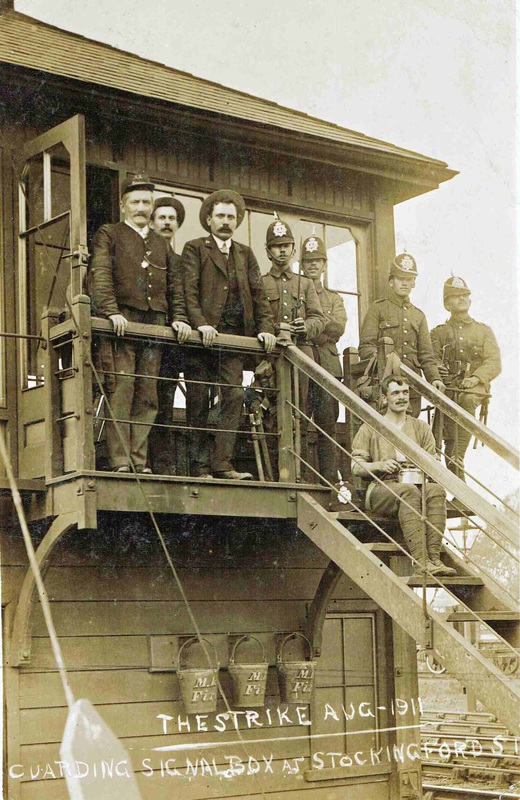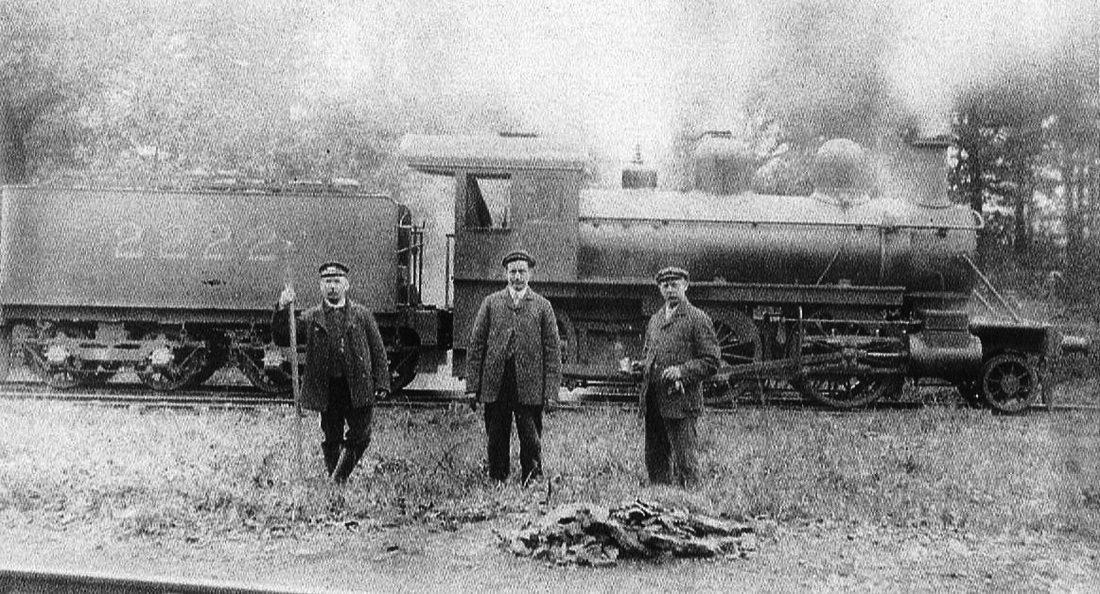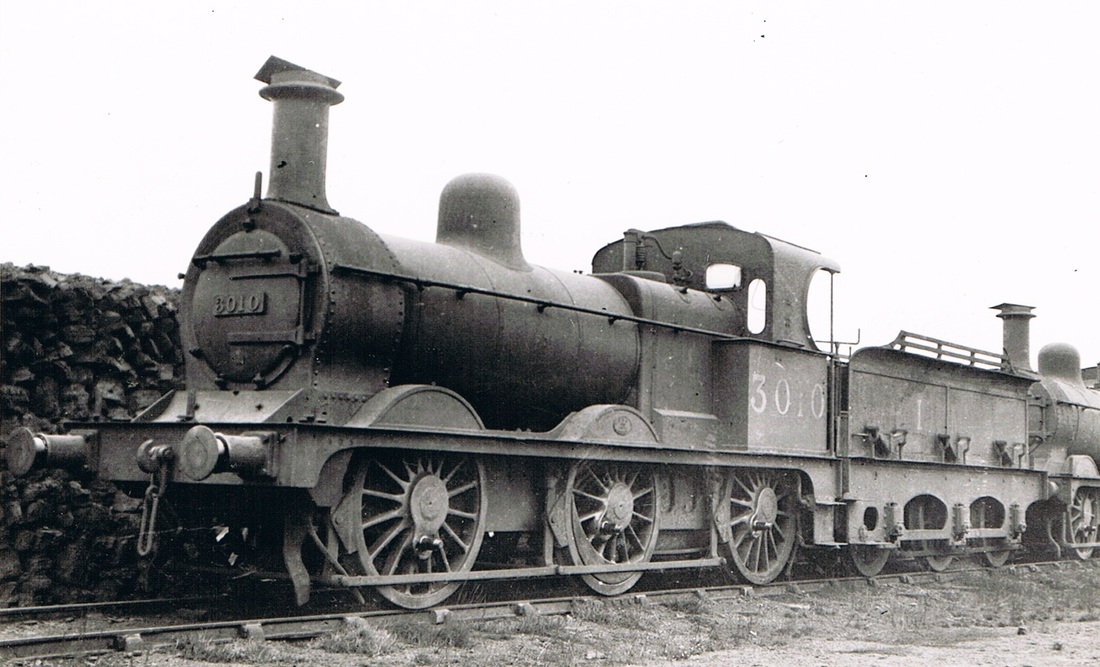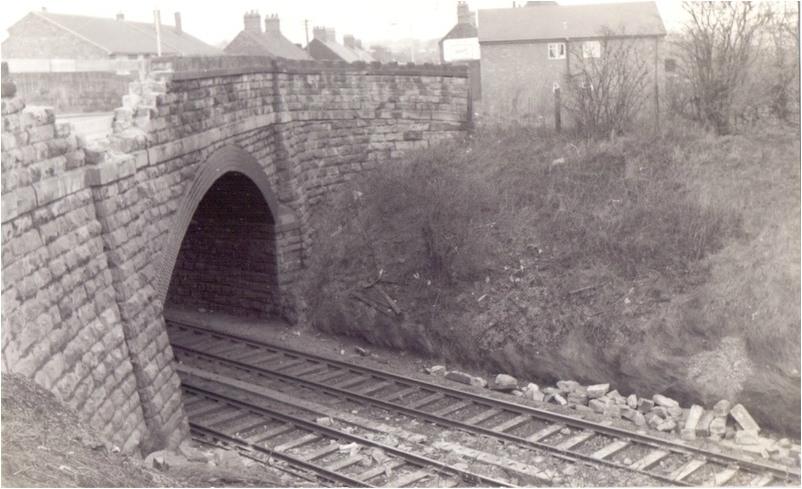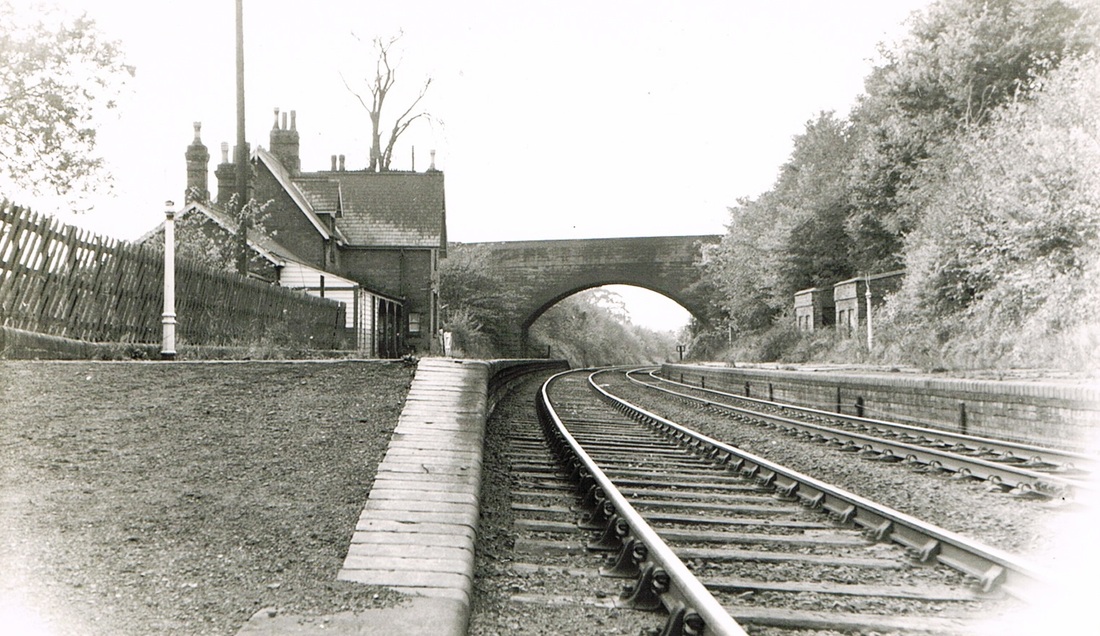The Midland Railway passed through Nuneaton its main Leicester to Birmingham route, although to get to Leicester it exercised running powers over the L.N.W.R.'s South Leicester Railway. Like the L.N.W.R. it was a huge undertaking. It had marshalling yards at Nuneaton Abbey Street station and a loco shed and extensive sidings at Stockingford.
Nuneaton Abbey Street Station
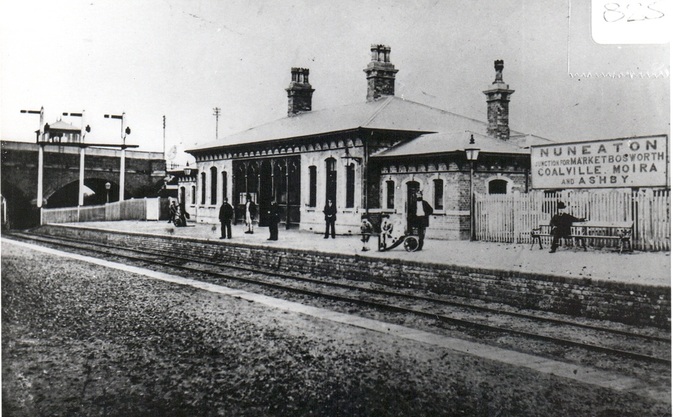
An early photograph of Nuneaton Abbey Street station possibly shortly after completion in the 1870's. The station master Mr. Thomas Paling is believed to be the one sitting on the bench on the right. Note that the destinations reached on the sign board do not include Loughborough Derby Road station so this is indicative that the Charnwood Forest Branch has not opened, or MR trains do not reach there.
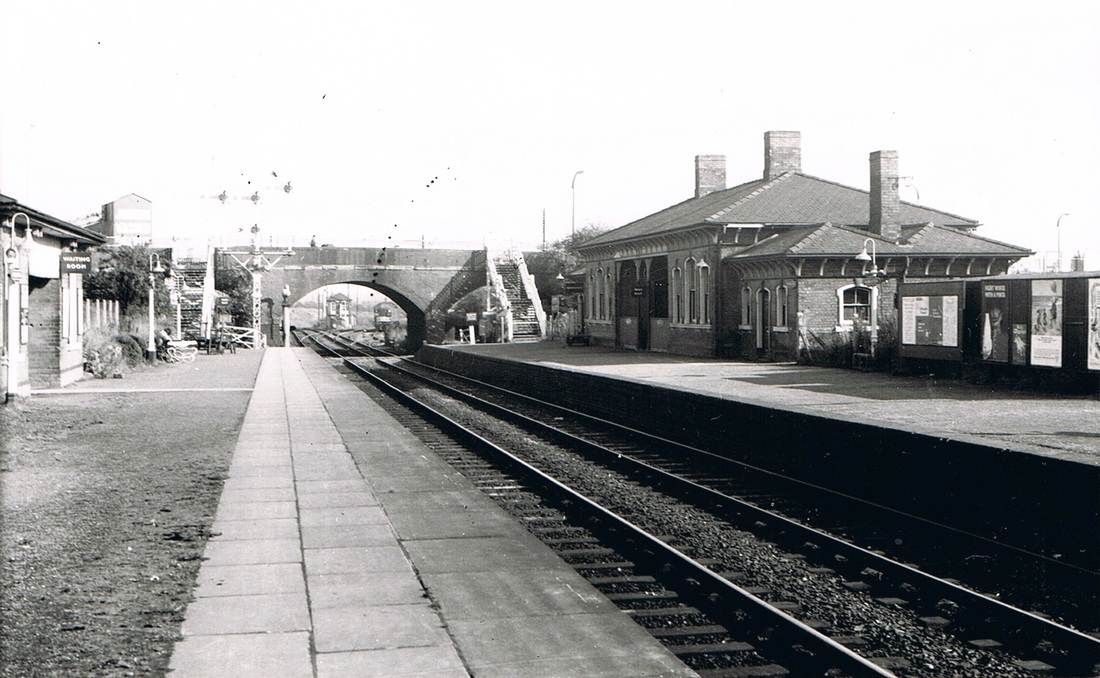
A general view of Abbey Street station looking towards Leicester in the 1960's. A class 37 diesel lurks just below the bridge arch in the goods yard beyond. As the line passed under the bridge it split into three routes. To the left it went to Market Bosworth and Shackerstone Junction, straight on was a spur line which went down to Trent Valley station on the LNWR, and the main line route of the MR bore to the right in the direction of Hinckley & Leicester. (Maurice Billington)

Stanier "Crab" 2-6-0 passes light towards Leicester tender first through Abbey Street, probably returning to Nuneaton shed after a spot of shunting in Stockingford yard. The middle peg (signal) is up which will direct the engine "down the Valley" to the Trent Valley main line. Its a snowy day and the platforms have not been cleared. (Color-Rail)

Abbey Street station looking towards Birmingham in the 1920's. At that time this station had three signal boxes. One at the far end of the right hand platform, Abbey Junction box at the Leicester end of the station beyond the road overbridge, and Abbey Street Sidings box. This arrangement was re-arranged in the thirties when the box we see here and the Abbey Street Sidings box was dispensed with as part of economy measures carried out by the LMS at the time, and replaced by ground frames. The box we see here controlled access to a turntable which was located on the left hand side beyond the left hand platform. This table was used to turn engines engaged on shunting operations in the goods yard but was only suitable for the MR's small engines and was dispensed with in the 50's. On the right of the photo are the extensive sheds and crushing plant of the Midland Stone Quarry and the Coventry Canal separates the stone quarry from the railway. Midland Stone Quarry did not have a siding from the main line but had a small narrow gauge railway system within the quarry itself for removal of stone. This was either rope or horse worked.
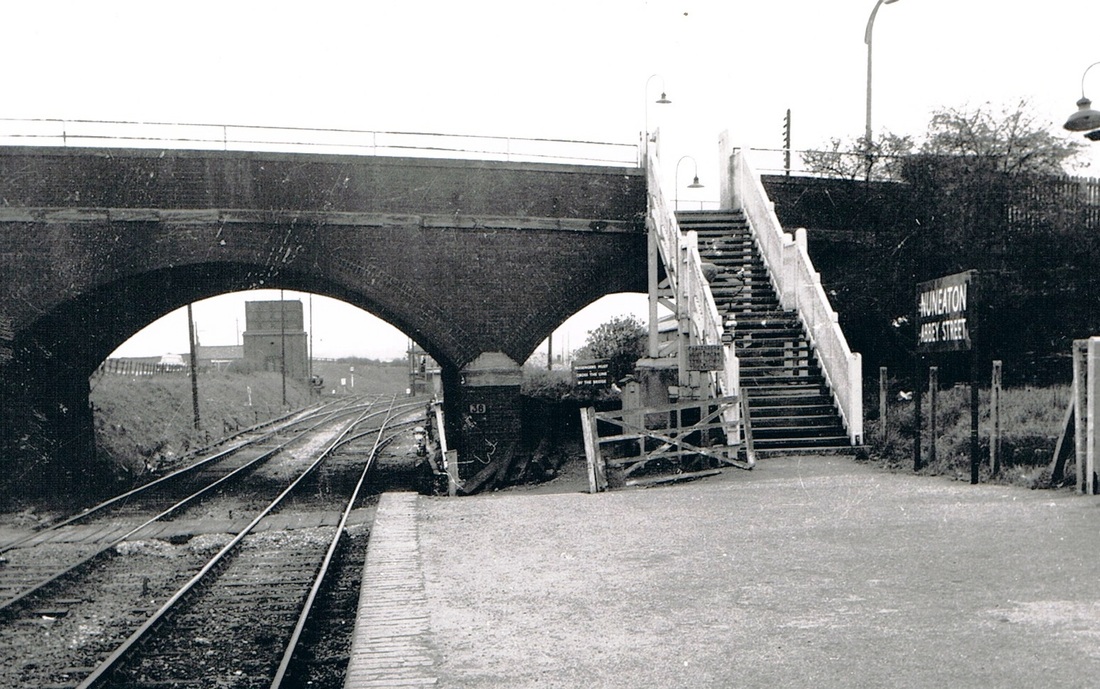
A view, probably in the early 60's or 1950's judging by the enamel sign board, of Nuneaton Abbey Street looking through the bridge carrying the A47 road to Birmingham from the town. Through the bridge you can see the junction where lines diverted to Shackerstone straight on, (the Ashby & Nuneaton Joint line), one set of tracks went down to the Trent Valley main line and tracks diverging to the right went on to Leicester. Midland Junction signal box can be seen controlling the array of lines at this point. Note the boarded crossing which was often used by passengers crossing the line to reach the Leicester bound platform.

Ex MR Class 4F 0-6-0 Nr. 43953 in good order on an RCTS special in 1961. This special toured the local lines which did not see passenger traffic such as the former Leamington-Marton Junction truncated branch and the Ashby & Nuneaton joint. I have more information on this tour so more details will appear shortly. 43953 was built at Derby. The bridge is the road bridge carrying the A47 over Abbey Street station. Note passengers crossing the track on a boarded crossing which was quite normal in those days at this station although there was footbridge provision with steps up to the main road for rail passengers crossing the platforms. The DMU is ready to depart in the Birmingham direction. (Geoff Edmands)
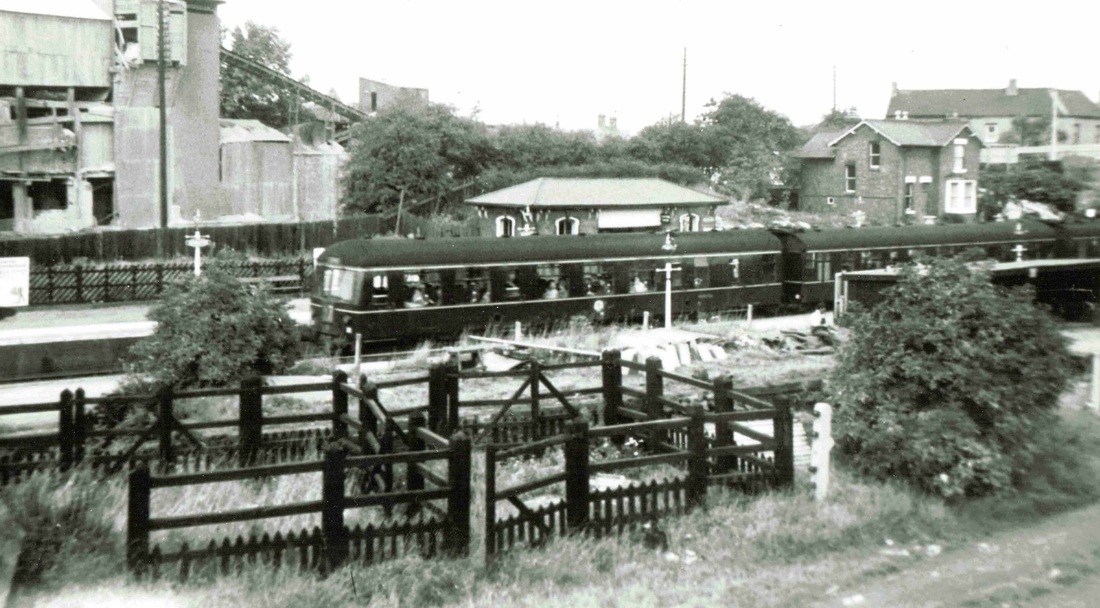
A very interesting view across the platforms at Nuneaton Abbey Street with a number of features long since gone. The corrugated iron crushing plant of the Midland Quarry Co. (also known as Ensor's Quarry after the family of farmers who scraped off the top soil to expose the dense hard diorite stone and started to quarry it). Top right the White Horse pub (still lingering on today) the stationmaster's house (still there) and above the DMU the roof of the waiting room on the Leicester bound platform. (also still there but today submerged in boscage). The typical MR pattern diagonal slatted fencing can be well seen and in the foreground the cattle dock which must have been out of use for many a year when this picture was taken in the 1960's. Out of sight is the cattle dock siding where in recent years covered wagons were dropped off or attached to trains very often scouting troops in the town had their kit shipped from here. I guess it had not been used for general merchandise for some time before the siding was taken out. To the right the station bike sheds. (Maurice Billington)

Once the first station was cleared and the new Ashby to Nuneaton joint line opened the layout looked like this. The signal cabin at this time was a very tall structure which had an excellent viewpoint over Tuttle Hill road bridge looking towards Birmingham but this arrangement only lasted a very few years as by the 1890's this large cabin had been replaced by a box at Midland Junction which survived until the end of mechanical signalling. This box is featured below and shows the revised arrangements of 1888.

A classic view of Nuneaton Abbey Street with a Stanier "Crab" Class 5MT 2-6-0 Nr. 42951 coming up from the Trent Valley line with a mixed freight. The roof of Nuneaton Abbey Junction signal box can be seen above the tank wagons. 42951 had been a Nuneaton engine for a month or so in 1953 but by this date it was a"foreign" engine. It was withdrawn in October 1965 and I date this photo in the early 60's.

A spot of trouble here. It seems that this 8F 48343 has engaged in a spot of vigorous shunting in Abbey Street marshalling yard and crashed through the stop block. The driver waits for rescue. Possibly the engine running tender first to the left is going to back down, hook on and drag him out. 48343 had a long career at Nuneaton July 1953-January 1966. Withdrawal came in February 1967. The houses in the background are in Jodrell Street. (Michael Mears)

The scurge of the North Western men at Nuneaton. A 4F on a mineral train. They were not liked at all at Nuneaton shed because of inadequate bearing surfaces and they were prone to run short of steam. The Midland 3 0-6-0 was a good engine but when they enlarged them to a 4F they were inadequate. The Midland goods shed at Abbey Street is in the background in this view. Plus a rake of stone hoppers ex-Judkins. (Michael Mears)
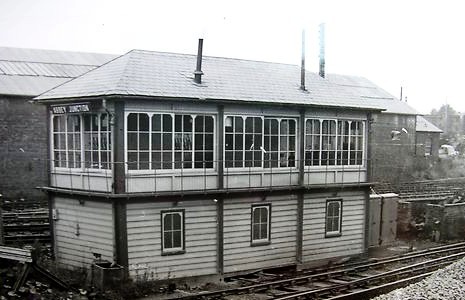
Nuneaton Abbey Junction signal box. A typical Midland Railway pattern cabin, controlling the trio of lines leaving Abbey Street station and the shunting activities at Abbey Street. At one time the Midland Railway had three signal cabins at Abbey Street station but this was subject to the economies of the 1930's and in 1935 two of the boxes were taken away and all movements controlled from this cabin.
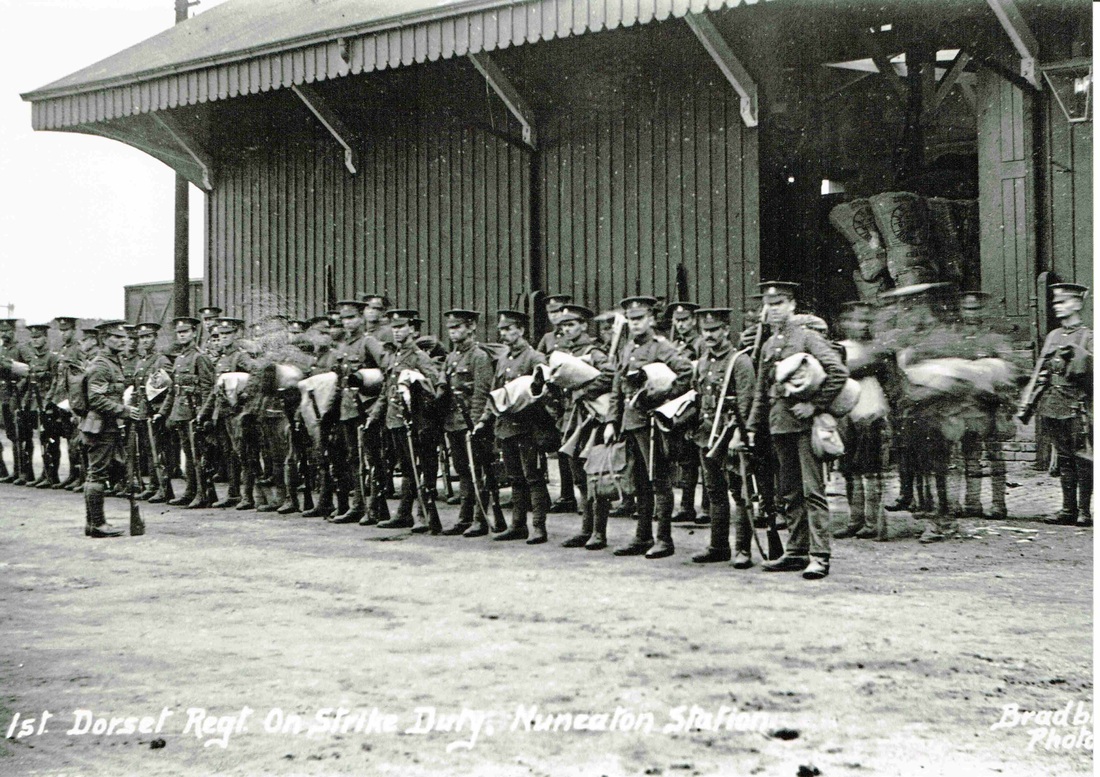
Strictly speaking this is a LNWR photo as the goods shed in the background is LNWR property but it is in the MR Abbey Street goods yard at Nuneaton. The reason for this was that both the MR and LNWR had goods sheds in each other's principle station goods yards at Nuneaton. This was for the interchange of goods between the two systems or to distribute merchandise brought from the competing railway company from their sources on their lines but delivered by the alternative company. Opening and closing times for these sheds were strictly controlled to prevent unfair commercial advantage. The MR goods shed in Nuneaton Trent Valley Station was removed shortly after grouping in 1923 but the LNWR shed was not pulled down until the goods yard at Abbey Street station closed in the 60's. The photo shows the 1st Dorset Regt. were brought in to guard railway premises during the railway strike of 1911 and have just detrained at Abbey Street. (Bradbury, Stockingford)

Maurice Billington took this photo because he was very partial to this dinky little engine. MR 2F 58240 which was a regular yard engine at Abbey Street goods yard. He took a series of photos of her fussing about the yard and re-arranging the trucks. Occasionally it set out to Haunchwood Colliery and Arley Colliery on the "Paddy" train.

Here is another photo of 58240 from Maurice Billington's collection. An old stalwart at Abbey Street regularly seen in the goods yard shunting, and on trip working along the Leicester-Birmingham line particularly on local freight traffic dropping off/picking up and shunting country station yards en-route but generally it was at Abbey Street. It had been at Nuneaton for many years when it was withdrawn in May 1953 and may have been one of the engines at Stockingford shed when that closed in the 30's. It was an old engine much loved by a departed generation of railway enthusiasts and railway men. Maurice always had a twinkle in his eye when we talked about it. (Maurice Billington)

Another view of the pile up of wagons at Abbey Street station on 18th November 1968. The train's couplings broke and the train separated and as the first portion of the slowed at Abbey Street the rear portion caught up with it with the results we see here. One of the badly smashed up wagons contained shoes. (Geoff Edmands)
Haunchwood (Nowells) Sidings, Stockingford
The layout at Stockingford before expansion of the marshalling facilities and opening of the loco shed (pre 1900).
The Stockingford Branch
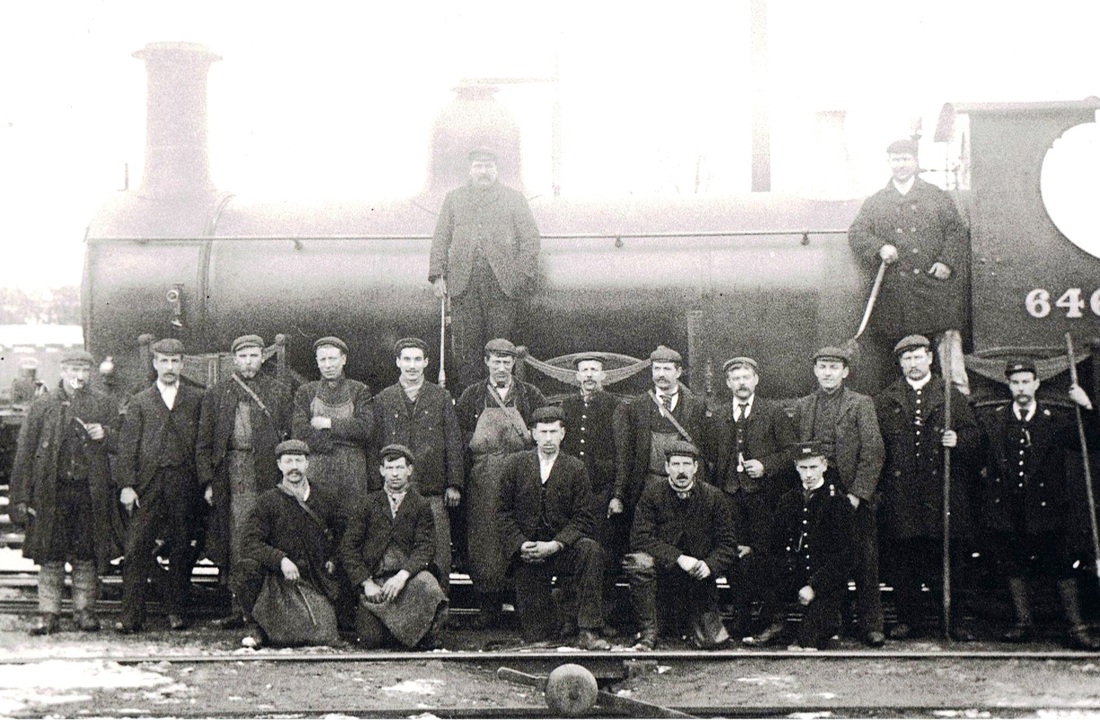
For many years I was under the impression that the Stockingford Colliery sidings on the Stockingford branch were shunted solely by the MR, and that colliery wagons were drawn down to the exchange sidings by 12 large Clydesdale horses. Here we see a MR 0-6-0 Nr. 646 with its pre-1907 number in place parked in the sidings surrounded by a group of railwaymen, A driver with his long nosed oiling can on the running plate, his fireman with a shovel. Various shunters with their shunting poles and colliery workers in their aprons. All anonymous today. Looking at photos of the rickety track in the colliery yard I can well imagine that horses were better at negotiating the rail joints than industrial steam locos, but in recent years there has been suggestions from good sources that Stockingford Drybread Colliery did indeed have its own locos but their identity is not known. The MR, however, kept their locos well out of the colliery yard otherwise the re-railing team would have been kept in business up the Stockingford branch. It looks a cold day here as snow is lying on the ground.
Stockingford Station, Locomotive Shed and Goods Yard.
Junction for the Stockingford Branch.

A good general view of Stockingford station in its heyday. Goods shed to the left. Station signal box to the right, the side of the loco shed can be seen, and the sidings coming in to the left trailing into the marshalling yard. The passenger station platforms can be seen in the distance. There were formerly three signal boxes at Stockingford, Haunchwood Colliery box beyond the over bridge in the distance, the station box seen here, and the Stockingford sidings box which controlled the other end of this layout. Due to economy measures two of these boxes were decommissioned in the mid 1930's. Haunchwood sidings box replaced by a ground frame, and the station box we see here taken out of use, concentrating all signalling on the sidings box. The photo was taken by Bradbury's the Stockingford photographer.

Stockingford Locomotive Depot some 30 years after closure. The photo was taken about 1968. The reason it was retained was because the water tower on the left was retained until the closure of Stockingford goods yard. After the shed was closed the overgrown sidings were used for cripple wagon storage. Note the old turntable ring in the foreground. (Alan Cook collection)
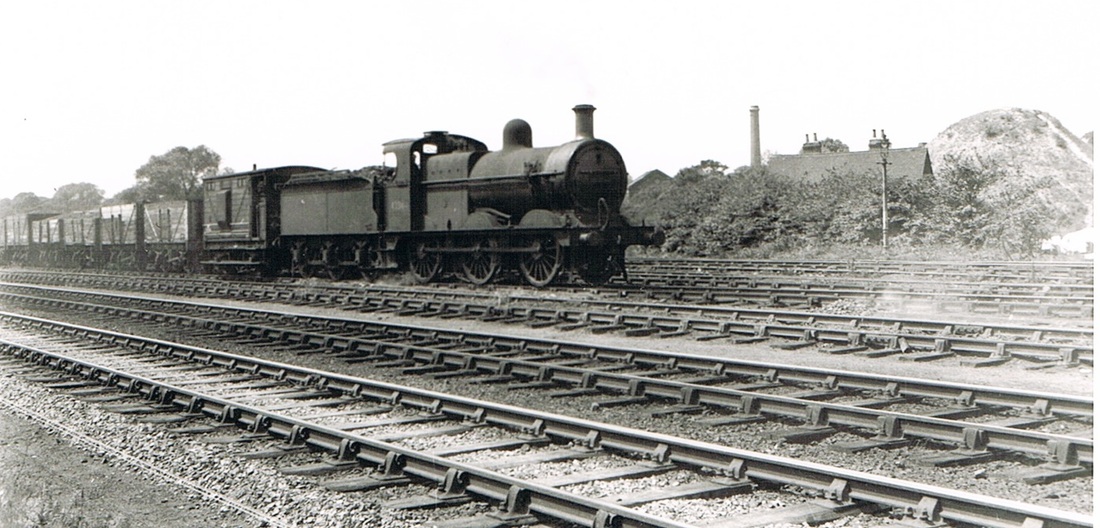
Ex MR 0-6-0 Nr. 43786 brings a coal train off the Ansley Hall branch into Stockingford yard. This engine was a regular performer on the branch and on Stockingford duties for many years. It was well regarded by footplate crews, as the former Midland 3's were better than the Midland 4F being a better balanced design. On the right is the pit tip of the former Nuneaton Colliery which closed in 1922. (Maurice Billington)
The Ashby & Nuneaton Joint Railway (A joint venture between the Midland Railway and the London & North Western Railway - opened in 1873)
(see also the LNWR section)

Abbey Junction looking towards Abbey Street station. By the time this photo was taken in the 1980's the Ashby line (A&N Jt.) had been reduced to a siding serving Judkins Quarry on the right. Stone hopper wagons on the right are ready to be filled. Abbey Junction signal box is in the centre looking newly painted. The old Midland Railway goods shed on the left has been extended, but by the time this photo was taken the premises were due for demolition and would soon be swept away. (Peter Lee)
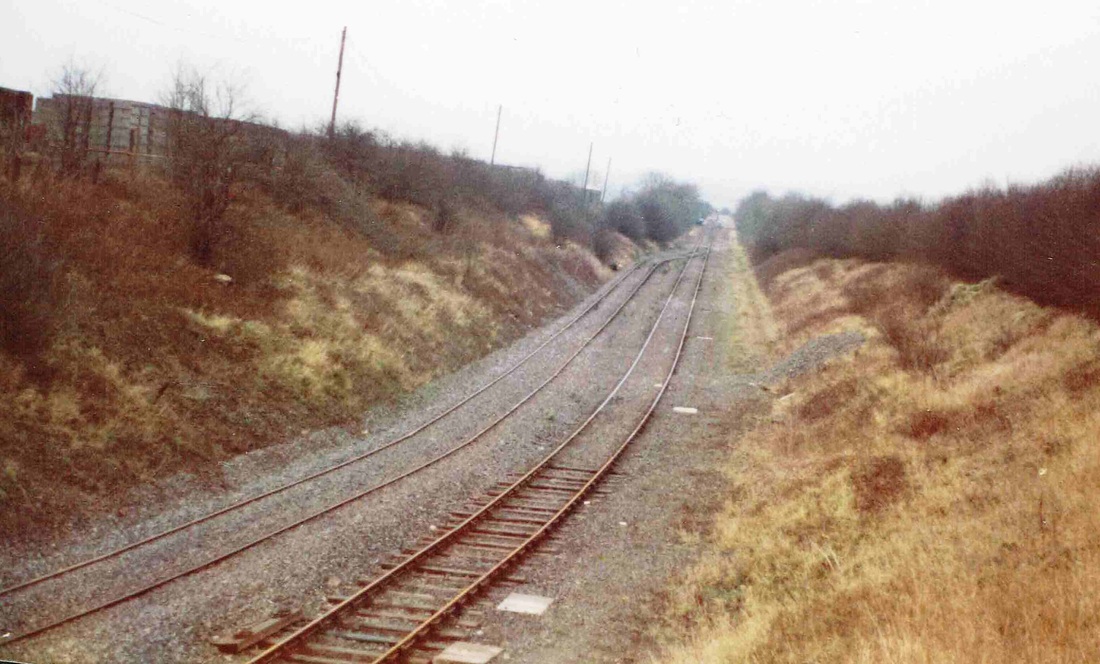
Taken on the same occasion as above from the other side of the railway bridge by Judkins Quarry railway wharf - Stoney Road - looking towards Weddington Junction on the Ashby & Nuneaton Joint. The truncated remains of the A&N Jt in the direction of Shackerstone junction. The track on the left is the loading wharf siding. (Peter Lee)

For a time after the Ashby & Nuneaton joint formally closed to through traffic the redundant trackage was used to store thousands of the old loose coupled steel mineral wagons then fast being phased out in favour of vacuum braked bogie stock. These wagons stood there for several months and in the meantime metal thieves moved in and wrecked the axle boxes for the brass bearings, rendering ultimate removal of the wagons for scrap very difficult. This photo is of the embankment leading under the A5 Watling street looking towards Higham on the Hill. (Alan Cook)
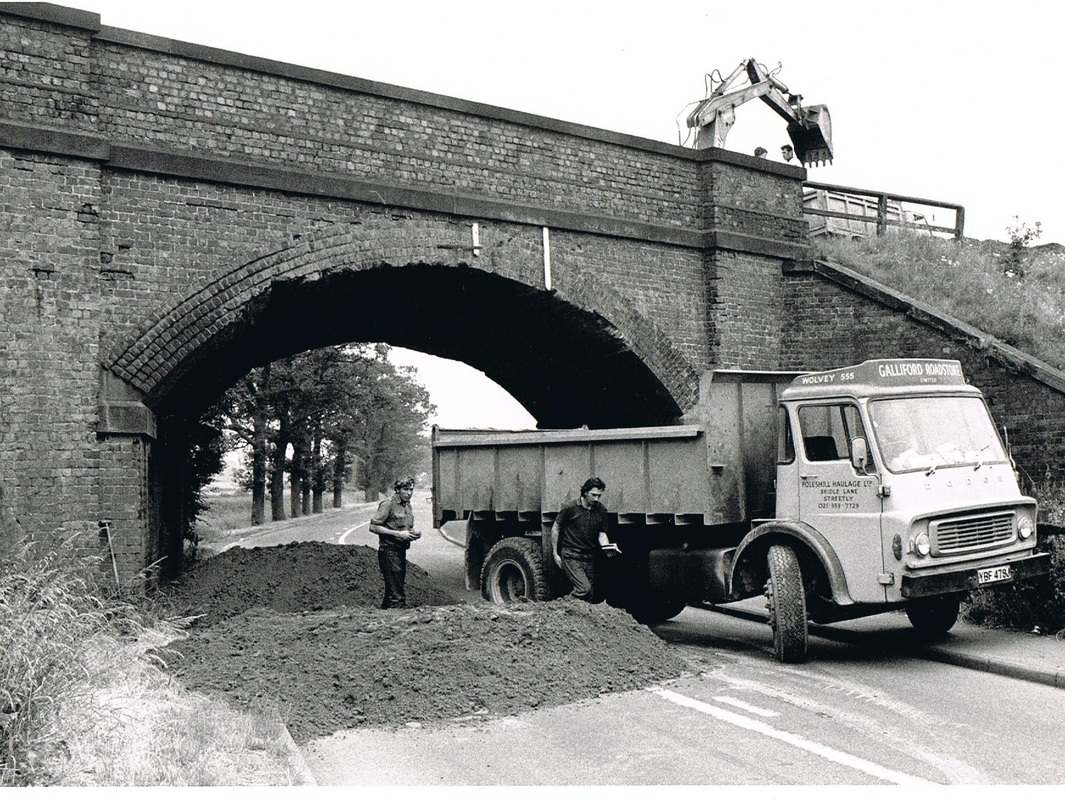
The Midland Railway entered into a joint agreement with the LNWR to build a line through Shackerstone junction connecting with the coalfields in the north Leicestershire area around Burton on trent, Coalville and Ashby de la Zouch. This was known as the Ashby & Nuneaton Joint Line. After closure a local contractor is getting ready to blow up the Weddington Road bridge on the A&N Jt. (Reg. Bull)
